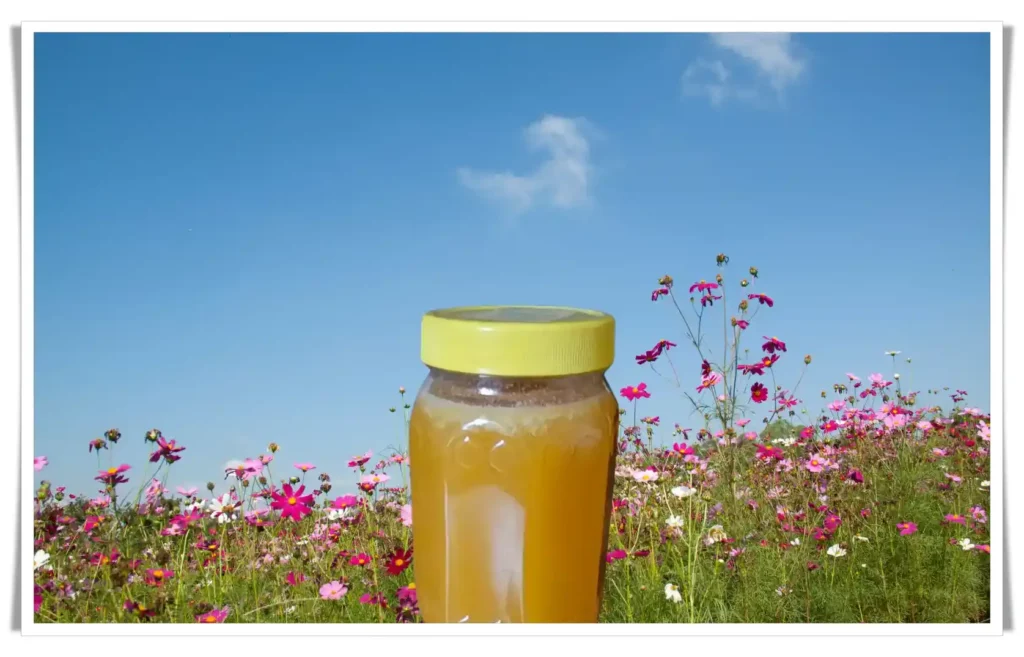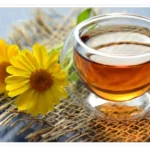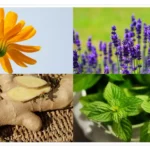Introduction
Polyflora honey, also known as multifloral or wildflower honey, is a type of honey derived from the nectar of various plant species. This diversity gives polyflora honey a unique flavor profile and a range of health benefits, making it a popular choice among honey enthusiasts and health-conscious consumers.
This is a very complex type of honey, because it contains the nectar of several dozen or even hundreds of medicinal plants and, consequently, also benefits from their therapeutic properties. Polyflora honey is indicated in periods of overwork, physical or intellectual fatigue or in convalescence states. The polyflora honey from the plains has a stronger antiseptic and sedative action, while that from the mountainous regions has a toning effect, immunizes and soothes sore throats. In traditional medicine, mountain honey is used to disinfect wounds and skin inflammations. To strengthen the immune system, you can, for example, in the cold season, drink a cup of warm milk every morning mixed with a teaspoon of multiflora mountain honey.

Nutritional and Therapeutic Profile
Polyflora honey is packed with a variety of nutrients and bioactive compounds, including vitamins (B1, B2, B3, B5, B6, C, and K), minerals (iron, calcium, magnesium, and boron), enzymes, organic acids, and natural sugars (glucose and fructose). The combination of these elements provides a powerful nutritional boost and contributes to the honey's therapeutic properties.
Benefits of Polyflora Honey
1. Nutritional Powerhouse
Due to its diverse floral sources, polyflora honey contains a broader spectrum of nutrients compared to monofloral honeys. It can help replenish low sugar levels, combat fatigue, and provide sustained energy. The vitamins and minerals in polyflora honey support various bodily functions and promote overall health.
2. Immune System Support
Polyflora honey is rich in antioxidants and antibacterial compounds, which help strengthen the immune system. The presence of diverse pollen sources enhances its ability to fight infections and protect the body against illnesses. Regular consumption can help reduce the risk of common colds and other infections.
3. Skin Health
The antibacterial and antiseptic properties of polyflora honey make it beneficial for skin health. It can be used topically to treat wounds, burns, and skin inflammations. The natural enzymes in the honey promote healing and regeneration, while its moisturizing properties keep the skin hydrated and nourished.
4. Respiratory Health

Polyflora honey is known for its efficacy in treating respiratory conditions. Its antibacterial and anti-inflammatory properties help alleviate symptoms of colds, flu, sinusitis, bronchitis, and sore throats. It forms a protective barrier in the throat, reducing irritation and soothing coughs.
5. Digestive Health
The natural sugars and enzymes in polyflora honey support digestive health by promoting the growth of beneficial gut bacteria. It can help relieve digestive disorders such as gastritis, improve appetite, and regulate bowel movements. Its prebiotic properties contribute to a healthy gut flora balance.
6. Cardiovascular Health
Polyflora honey aids in improving cardiovascular health by enhancing blood circulation and providing essential nutrients for heart function. The antioxidants present help reduce cholesterol levels and prevent oxidative stress, which can lead to heart diseases.
Regional Variations
The therapeutic properties of polyflora honey can vary depending on the geographical region where the nectar is collected. For instance, honey from plains areas tends to have stronger antiseptic and sedative effects, making it ideal for wound care and relaxation. On the other hand, mountain polyflora honey has a toning effect, boosts the immune system, and soothes sore throats. This variation is due to the different types of plants that grow in these regions, each contributing its unique properties to the honey.
Traditional Uses
In traditional medicine, polyflora honey is highly valued for its healing properties. It is commonly used to disinfect wounds and treat skin inflammations. During cold seasons, a common practice is to drink warm milk mixed with a teaspoon of mountain polyflora honey to strengthen the immune system and provide a comforting remedy for respiratory ailments.
How to Use Polyflora Honey
1. Direct Consumption
One of the best ways to enjoy the benefits of polyflora honey is to consume it directly. A spoonful in the morning can provide an energy boost and support overall health. It can also be added to warm water or herbal teas for a soothing drink.
2. Topical Application
For skin health, apply polyflora honey directly to the affected area. Its antibacterial and healing properties make it an effective natural remedy for wounds, burns, and acne. It can also be used in homemade face masks to nourish and hydrate the skin.
3. Culinary Uses
Polyflora honey is a versatile sweetener that can be used in a variety of dishes. It adds a unique flavor to smoothies, yogurt, oatmeal, and salad dressings. Its natural sweetness and rich taste make it a healthier alternative to refined sugar in baking and cooking.
Storage and Preservation
To maintain the quality and benefits of polyflora honey, it should be stored in a cool, dry place away from direct sunlight. Proper storage helps preserve its nutritional properties and prevents crystallization. If crystallization occurs, gently warm the honey by placing the jar in warm water to restore its liquid form.
Precautions and Considerations
1. Allergies
Individuals with pollen allergies should be cautious when consuming polyflora honey, as it contains pollen from various plants. It is advisable to perform a patch test before using it topically to check for any allergic reactions.
2. Infants
Honey should not be given to infants under one year of age due to the risk of botulism, a rare but serious illness caused by bacterial spores that can be present in honey.
3. Moderation
While polyflora honey offers numerous health benefits, it is high in natural sugars and should be consumed in moderation. Excessive intake can lead to weight gain and affect blood sugar levels.
Study!
The study "Chemical Composition, Antioxidant and Antimicrobial Activity of Some Types of Honey from Banat Region, Romania" assesses ten varieties of honey, including:
- Types Analyzed: Knotweed, linden, wild cherry, acacia, honeydew, oilseed rape, sunflower, phacelia, plain polyflora, and hill polyflora.
- Chemical Properties Measured: Water content, dry matter, impurities, acidity, pH, reducing sugars, minerals, flavonoids, and total phenolic content.
- Nutritional Characteristics: All honey samples showed good nutritional profiles, with significant variability in mineral content based on botanical origin.
- Antioxidant Capacity: Linden and honeydew honeys exhibited the highest antioxidant activities.
- Antimicrobial Activity: All honey types demonstrated effective antimicrobial properties.

Key Findings:
- Mineral Content: Varies significantly with botanical origin.
- High Antioxidant Capacity: Particularly in linden and honeydew honeys.
- Antimicrobial Effectiveness: Broad-spectrum antimicrobial activity across all samples.
The study underscores the health benefits of honey from the Banat region, highlighting its diverse bioactive properties. For further details, visit PubMed.
Conclusion
Polyflora honey is a complex and nutritionally rich type of honey that offers a wide range of health benefits. Its diverse floral sources contribute to its unique properties, making it a valuable addition to a healthy diet and natural remedy arsenal. Whether consumed directly, used topically, or incorporated into culinary creations, polyflora honey provides a delicious and effective way to support overall health and well-being. Its versatility and therapeutic potential make it a must-have for those seeking natural health solutions.
Please read my other articles related:
- Honey with Sea Buckthorn: Benefits and Properties
- Honey with Propolis: A Natural Powerhouse for Health
- Unlocking the Sweet Mysteries: Why Does Honey Crystallize and Can It Ever Spoil?
- The Fascinating World of Honey: From Hive to Home




